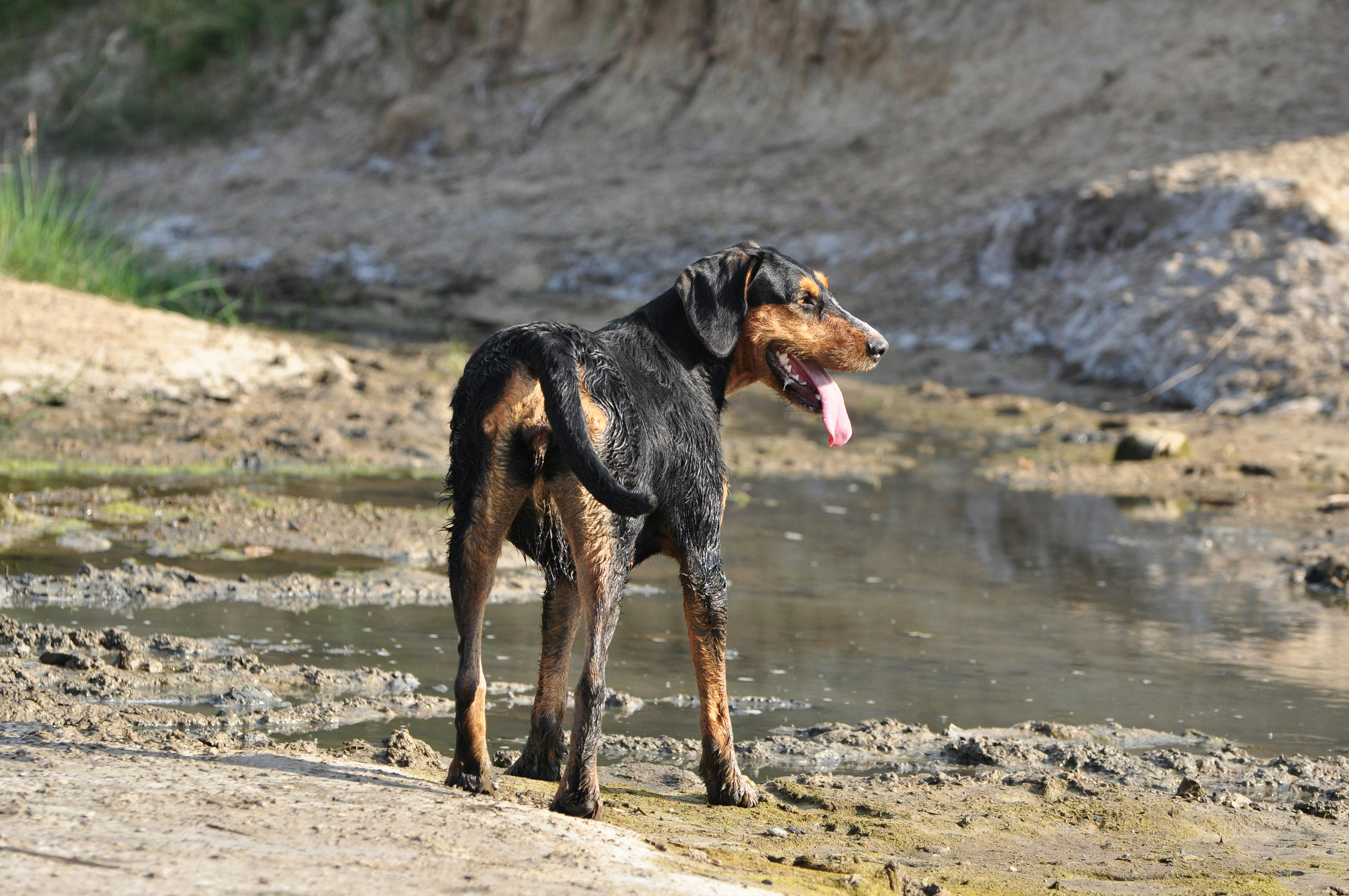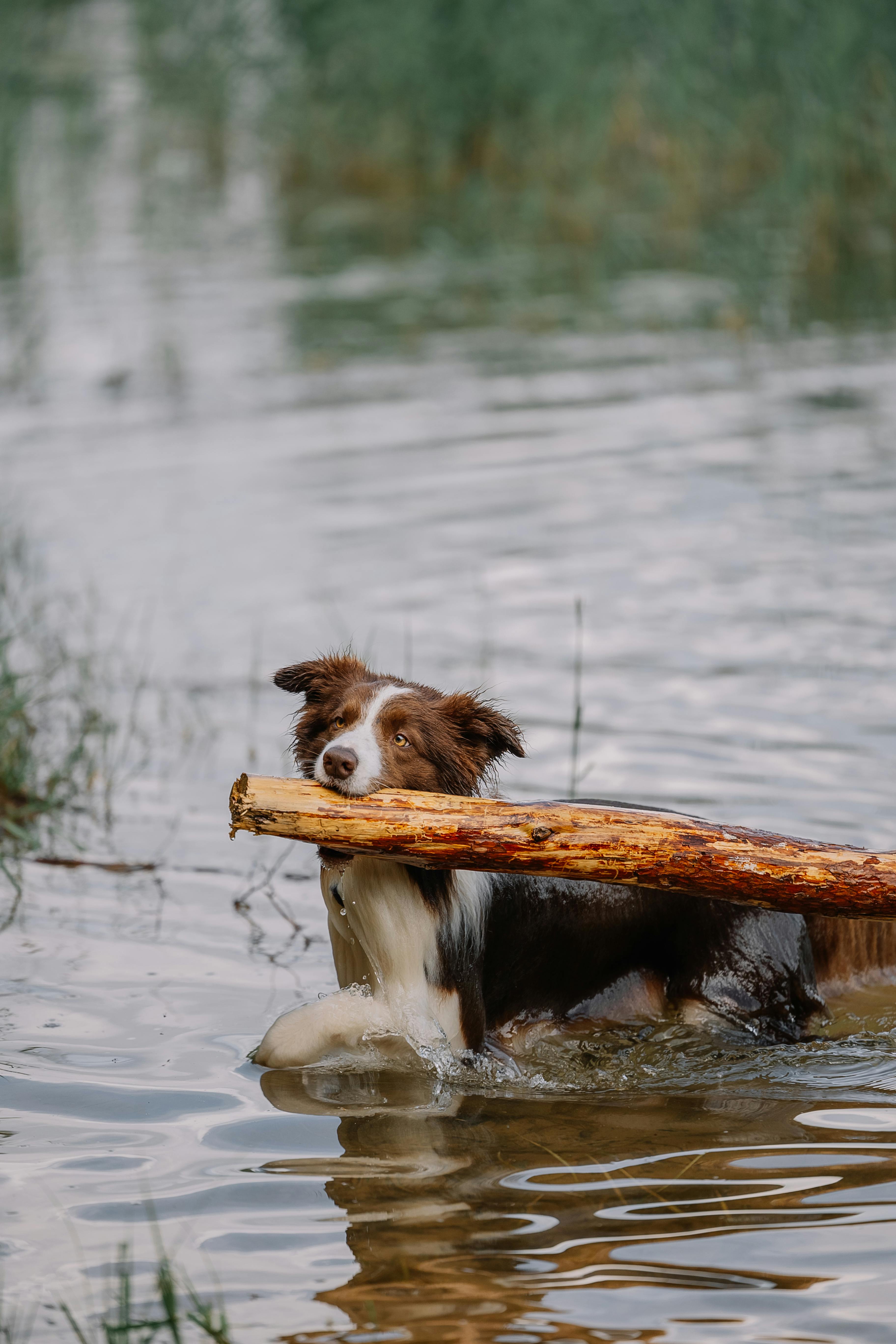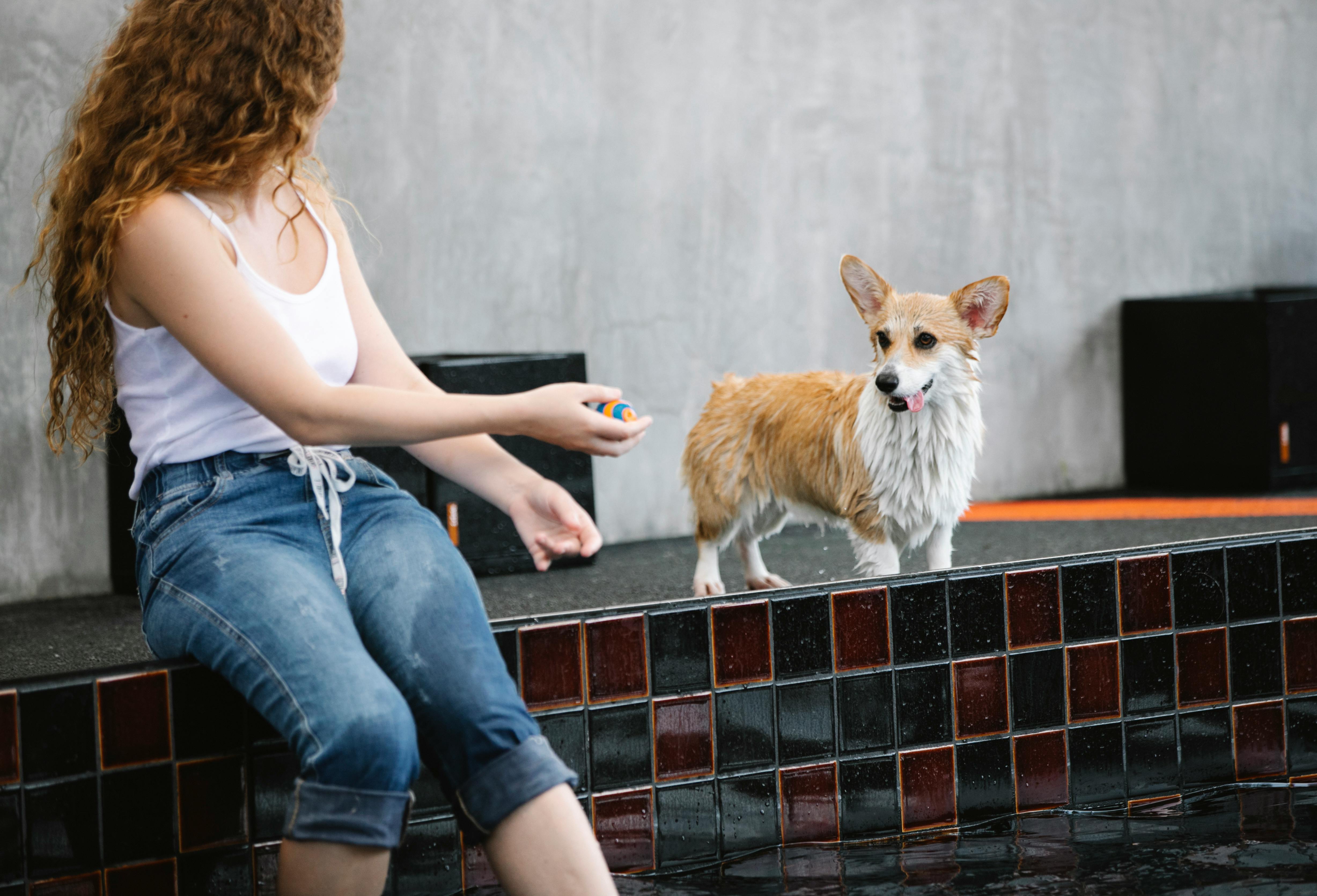Have you ever wondered, why do dogs have wet noses? This intriguing question has baffled pet owners and animal lovers alike! The truth behind those damp, cool noses is not just a quirky trait; it reveals so much about our furry friends. Wet noses can be a sign of good health, but they also play a crucial role in how dogs perceive the world around them. Curious to learn more? Discover the fascinating truth today!
In the world of dog behavior, a dog’s wet nose serves several important functions, from temperature regulation to enhancing their sense of smell. But why exactly are these noses always so moist? Is it just a natural phenomenon, or does it have deeper significance? Understanding the science behind this common canine characteristic can help you better connect with your pet.
Join us on this journey to explore the reasons behind why dogs have wet noses and uncover the secrets of their unique physiology. You might be surprised by what you learn! Don’t miss out on the chance to deepen your appreciation for your four-legged companion as we dive into the remarkable world of dog noses!
The Science Behind Canine Nose Moisture: Why Are Dog Noses Wet?

Ever wondered why dogs have wet noses? This simple question leads to a fascinating journey into the world of canine biology, and it reveals much about our furry friends. The moistness of a dog’s nose is not just a random characteristic but serves important purposes, both for health and for their unique sense of smell. Let’s dive into the science behind canine nose moisture and understand why it’s such a big deal.
The Anatomy of a Dog’s Nose
A dog’s nose is an intricate organ, and it’s much more than just a cute addition to their face. The surface of a dog’s nose is covered in a layer of skin that contains numerous sweat glands. These glands produce moisture, which helps to keep the nose damp. Here are some key points about the anatomy of a dog’s nose:
- Skin Glands: Dogs have both sebaceous and sweat glands, but they primarily rely on sweat glands in their noses for moisture.
- Temperature Regulation: Wet noses help dogs regulate their body temperature.
- Sense of Smell: A moist nose helps trap scent particles, enhancing their ability to detect smells.
Why Are Dog Noses Wet?
So, why do dogs have wet noses? It’s not just a random trait. A wet nose plays a crucial role in how dogs perceive the world around them. The moisture on their nose helps to absorb scent particles from the air, which is vital for their sense of smell.
Dogs have an extraordinary sense of smell, estimated to be between 10,000 to 100,000 times more sensitive than that of humans. Here’s how wet noses contribute:
- Enhanced Scent Detection: Moisture on the nose enhances the ability to detect scents by capturing and holding scent particles.
- Cooling Mechanism: A wet nose helps cool a dog down, similar to how sweating works for humans. This is especially important on hot days.
- Health Indicator: A healthy dog usually has a moist nose, while a dry nose can indicate dehydration or illness.
The Historical Perspective
Historically, dogs have been companions to humans for thousands of years, and their noses have always been a point of fascination. Ancient civilizations recognized the importance of a dog’s sense of smell. For example:
- Hunting and Tracking: Early humans used dogs with keen noses for hunting and tracking game.
- Search and Rescue: Even today, dogs are trained to assist in search and rescue missions, showcasing the evolutionary advantages of their wet noses.
Comparison of Dog Noses to Other Animals
Interestingly, the moisture of dog noses isn’t unique to them. Many animals have wet noses for similar reasons. Here’s a quick comparison:
- Cats: Like dogs, cats also have moist noses, which aid their sense of smell but they do not rely on it as heavily.
- Rabbits: Rabbits have moist noses too, which help them sniff out food and detect predators.
- Pigs: Pigs are known for their incredible sense of smell, and they also have wet noses.
Fun Facts About Dog Noses
Did you know that a dog’s nose print is unique, just like a human fingerprint? Here are some more fun facts about dog noses:
- Color Variation: The color of a dog’s nose can vary significantly among breeds, with some having black, pink, or spotted noses.
- Temperature Check: While a moist nose is generally a sign of good health, it’s important to note that not all wet noses mean a dog is healthy. Other symptoms should be monitored.
- Communication Tool: Dogs also use their noses for communication. They can detect pheromones from other dogs, which convey information about mood, health, and readiness to mate.
Practical Examples of Nose Moisture Importance
Understanding the moisture of a dog’s nose can help dog owners better care for their pets. Here are some practical examples of what to look for:
- Signs of Illness: If your dog’s nose suddenly becomes dry and cracked, it might be time for a vet check-up.
- Hydration Reminder: Ensure your dog is hydrated, especially in hot weather, by providing ample water.
- Seasonal Changes: Dogs may have drier noses in winter due to low humidity, so using nose balms can help.
The next time you pet your dog and feel that familiar wet nose, remember it’s not just a cute feature. It’s a part of their biology that plays an essential role in their health, communication, and remarkable sense of smell. From their evolutionary background to their everyday lives, the wet nose is a testament to the incredible adaptations that make dogs such beloved companions.
Top 5 Reasons Why Dogs Have Wet Noses: Unveiling Nature’s Design

Have you ever noticed your dog’s wet nose and wondered why it’s like that? Dogs are pretty fascinating creatures, and their wet noses are one of the many things that make them so unique. So, why do dogs have wet noses? Let’s dive into the top five reasons, uncovering nature’s design and exploring the intriguing truth behind this canine characteristic.
1. Enhanced Sense of Smell
One of the primary reasons why dogs have wet noses is because it helps them smell better. Dog’s noses are equipped with a large number of scent receptors—around 300 million, compared to a human’s 5 million! When their noses are moist, it helps to capture scent particles from the air. This moisture allows the particles to dissolve and makes it easier for the dog’s olfactory receptors to detect various smells. Can you imagine how powerful that is?
2. Body Temperature Regulation
Dogs don’t sweat like humans do. They primarily regulate their body temperature through panting. However, their wet nose also plays a role in this process. The moisture on a dog’s nose evaporates, which helps to cool down their body. This is especially important during hot weather or after vigorous play. A dry nose can indicate that a dog might be overheating or not feeling well. It’s like a built-in thermometer!
3. Communication Tool
Dogs are social animals, and they communicate in various ways, including through body language and scent. A wet nose can be a form of communication. When a dog nudges you with their nose, they might be trying to say “Hello” or “Pay attention to me!” The moisture on their nose can also transfer scents to you, which can be a part of their way of bonding with humans and other dogs.
4. Natural Defense Mechanism
The wetness of a dog’s nose can also serve as a natural defense mechanism. A moist nose can help in trapping dust, pollen, and other allergens. By keeping their noses wet, dogs can better filter out harmful particles and allergens, reducing the chances of respiratory issues. This is particularly important for dogs who spend a lot of time outdoors.
5. Health Indicator
A dog’s nose can be an indicator of their overall health. While a wet nose is usually a sign of a healthy dog, changes in texture or moisture can signal health problems. For instance, a dry, cracked nose can suggest dehydration or illness. On the other hand, a consistently wet nose is often a sign that everything is functioning as it should. Owners should monitor their dog’s nose condition as part of regular health checks.
Interesting Facts About Dog Noses
- Dogs have unique nose prints, similar to human fingerprints—no two are alike!
- The color of a dog’s nose can vary based on breed, age, and health status.
- A dog’s sense of smell is so advanced that they can detect certain diseases, like cancer or diabetes, just by sniffing.
- Dogs can differentiate between smells in a way humans can’t; they can smell individual scents even in a mix of smells.
- Dogs possess a Jacobsen’s organ, which allows them to detect pheromones and other chemical signals.
Comparisons: Dog Noses vs. Human Noses
| Feature | Dog Nose | Human Nose |
|---|---|---|
| Smell Receptors | ~300 million | ~5 million |
| Temperature Regulation | Helps cool the body | Sweating primarily |
| Communication | Through scent and moisture | Limited to sound and sight |
| Unique Identification | Nose prints are unique | Fingerprints are unique |
When you think about it, a dog’s nose is doing so much more than just being wet. It’s a multifunctional tool that aids in their survival, communication, and overall health.
So, the next time you give your furry friend a pat and feel that moist nose against your skin, remember all the incredible reasons behind it. This simple feature is a remarkable example of nature’s design, showcasing how evolution has equipped dogs to thrive in their environment. Embrace the wonder of your dog’s wet nose; it’s not just cute, it’s a testament to their unique biology and role in our lives.
Do Wet Noses Mean Healthy Dogs? Exploring the Myth and Reality

Dogs have been companions to humans for thousands of years, and their wet noses have long been associated with health. But is this true? Do wet noses really mean healthy dogs? This article dives into the myth and reality surrounding this age-old belief and explores why dogs have wet noses in the first place.
The Myth of the Wet Nose
When it comes to dog health, many people think a wet nose indicates a healthy pup. However, it’s not always so clear-cut. A wet nose can suggest that a dog is hydrated and active, but it does not serve as the only indicator of health. Here are some factors to consider:
- Environmental Conditions: A dog’s nose may be wet due to humidity or rain.
- Excitement or Play: Dogs’ noses can get wet after they’ve been playing or running around.
- Health Status: A dog with a dry nose doesn’t necessarily mean it’s sick; it could just be warm or resting.
So, while a wet nose might signal a healthy dog in some cases, it’s not a definitive health marker.
Why Do Dogs Have Wet Noses?
Wet noses aren’t just for show; there are several interesting reasons why dogs have them. Understanding these reasons can provide insight into your dog’s behavior and health. Here’s a list of reasons dogs have wet noses:
- Temperature Regulation: Dogs sweat less than humans. Their noses help them cool down. The moisture on their noses evaporates, which cools their body.
- Enhanced Smell: A wet nose helps to capture scent particles in the air. This is why dogs are often better at smelling than humans; they have a specialized olfactory system enhanced by the moisture in their noses.
- Health Indicator: Dogs often lick their noses, which can help keep it clean and also provide them with additional sensory information about their environment.
The Science Behind It
The anatomy of a dog’s nose is fascinating. The nose is covered with a thin layer of mucous that helps capture scents. Here are some scientific facts:
- Olfactory Receptors: Dogs have about 300 million olfactory receptors, compared to about 5 million in humans. This allows them to smell things we cannot even detect.
- Nasal Mucosa: The moist surface of a dog’s nose is called the nasal mucosa. This helps in trapping scent particles, improving the dog’s ability to smell.
- Thermoregulation: A moist nose can help regulate body temperature, as mentioned before. This is especially important on hot days.
When to Worry About Your Dog’s Nose
While a wet nose is generally a good sign, it’s important to pay attention to changes. Here are some conditions that could mean trouble:
- Dry and Cracked Nose: If a dog’s nose is dry, cracked, or peeling, it could indicate dehydration, illness, or allergies.
- Changes in Color: A nose changing color can be a sign of health issues. If it turns red, swollen or has sores, consult a vet.
- Excessive Moisture: If a dog’s nose is excessively wet or dripping, it may be a sign of a respiratory problem or a nasal infection.
Practical Tips for Dog Owners
As a dog owner, it’s essential to monitor your dog’s health beyond just looking at its nose. Here are some practical tips:
- Regular Vet Visits: Routine check-ups can catch potential health issues early.
- Hydration: Always ensure your dog has access to fresh water, especially during hot weather.
- Observe Behavior: Changes in appetite, energy levels, or behavior are often more telling than the state of a dog’s nose.
Final Thoughts
The belief that a wet nose means a healthy dog is both a myth and a reality. While it can be a good sign, it should not be relied upon as the sole indicator of health. Understanding why dogs have wet noses helps appreciate their biology and needs. Always keep an eye on your furry friend’s overall behavior and health, and maintain a good relationship with your veterinarian. So, the next time you see that familiar wet nose, remember it’s just one piece of a bigger puzzle in your dog’s health and happiness.
How a Dog’s Wet Nose Affects Their Sense of Smell: The Surprising Connection

Dogs are truly fascinating creatures, and one of the most intriguing aspects about them is their noses. You might’ve noticed that your dog’s nose is often wet. But have you ever thought about why do dogs have wet noses? What is the connection between this wetness and their incredible sense of smell? The surprising truth might just blow your mind!
The Anatomy of a Dog’s Nose
The nose is a complex organ, not just a cute addition to a dog’s face. Dogs have around 300 million olfactory receptors in their noses, while humans only have about 5 million. This means dogs can smell things we can’t even imagine! But what role does the wetness play?
- Moisture: A dog’s wet nose helps to absorb scent particles from the air. When the nose is wet, it can trap these particles more effectively.
- Cooling Mechanism: Dogs don’t sweat like we do. Their noses help with cooling down by evaporating moisture, which helps regulate body temperature.
The Evolutionary Perspective
Over time, dogs have developed these wet noses for survival. Their ancestors, wolves, relied heavily on their sense of smell for hunting and communication. A wet nose improves the capability to smell, which is critical for finding food and understanding their environment.
- Hunting and Tracking: A wet nose allows for better tracking of scents over long distances. This is why dogs are often used in search and rescue missions.
- Social Interactions: Dogs communicate through scents, and a moist nose can pick up pheromones and other social signals from other dogs.
Why Is a Wet Nose Important?
The wetness of a dog’s nose affects its sense of smell in various ways. Here are some key points to consider:
- Scent Detection: The moisture helps to dissolve scent molecules, which makes them easier to detect.
- Sensitivity: The wet surface enhances the sensitivity of the olfactory receptors, allowing dogs to identify subtle differences in smells.
- Health Indicator: A dog’s nose can also be an indicator of health. If it’s dry or cracked, it might mean they’re dehydrated or unwell.
Common Misconceptions
There are many myths surrounding the wetness of a dog’s nose. Let’s clear a few of them up:
- Warm vs. Cold Nose: A warm nose doesn’t necessarily mean a dog is sick. Dogs can have warm noses for multiple reasons, including being active or resting in the sun.
- Nose Color: The color of a dog’s nose does not relate to its ability to smell. All dogs can still have an excellent sense of smell regardless of the pigmentation of their nose.
Fun Facts About Dogs’ Noses
Here are some interesting tidbits about our furry friends and their noses:
- Dogs can be trained to detect certain diseases like cancer or diabetes through scent.
- The unique pattern of a dog’s nose is similar to a human fingerprint; it can be used for identification.
- Some breeds, like Bloodhounds, have a particularly acute sense of smell that makes them exceptional trackers.
Comparing Dogs’ Noses to Other Animals
Dogs are not the only animals with remarkable olfactory abilities. Here’s how their noses compare to other animals:
- Cats: Cats have about 50-80 million olfactory receptors. They are also good at smelling, but not to the extent of dogs.
- Bears: Bears have an even better sense of smell than dogs, with receptors estimated to be up to 2,100 times more sensitive.
- Humans: As mentioned, humans have around 5 million olfactory receptors, making our ability to smell relatively weak.
Practical Tips for Dog Owners
Maintaining your dog’s nose health is important. Here are some tips you should consider:
- Hydration: Ensure your dog has access to fresh water at all times.
- Check for Cracks: Regularly check your dog’s nose for dryness or cracks. If noticed, consult your veterinarian.
- Avoid Irritants: Keep your dog away from strong chemicals or irritants that could affect their nose.
Understanding how a dog’s wet nose affects their sense of smell is just one piece of the puzzle that makes these animals so amazing. Their ability to pick up scents, communicate through smells, and even detect illnesses showcases just how unique they are. So, next time you see your dog with that adorable wet nose, remember the science behind it!
Dogs and Their Wet Noses: What Every Pet Owner Should Know

Dogs are often known for their playful nature, loyalty, and those irresistibly wet noses. Have you ever wondered why do dogs have wet noses? It’s not just a quirky characteristic — it serves several important functions that every pet owner should know. Let’s dive into the fascinating truth behind those cool, moist noses and what they mean for our furry friends.
The Science Behind Wet Noses
Have you noticed how your dog’s nose is always cold and wet? Well, there’s a scientific reason for this! Dogs have mucous membranes that help keep their noses moist. This moisture plays a crucial role in helping dogs detect scents. In fact, a dog’s sense of smell is 10,000 to 100,000 times more sensitive than that of humans.
- Enhanced Scent Detection: The wetness in a dog’s nose helps capture scent particles from the air. This makes it easier for them to process smells.
- Temperature Regulation: A wet nose can help dogs cool down. Unlike humans, who sweat to regulate their body temperature, dogs do not have sweat glands all over their body. They primarily sweat through their paws, and having a wet nose can assist in keeping their body temperature balanced.
- Health Indicator: A dog’s nose can also reflect its health. A healthy dog will have a cool, moist nose, while a dry or cracked nose can indicate dehydration or illness.
Historical Context of Dogs’ Noses
The wet noses of dogs are not just a random evolutionary trait; there’s some history behind it. Canines have been domesticated for thousands of years. Ancient cultures often relied on dogs for hunting, herding, and companionship.
- Early Breeds: Various breeds of dogs were developed for specific tasks, and a keen sense of smell became essential. For example, Bloodhounds, known for their incredible tracking abilities, rely heavily on their moist noses to pick up scents.
- Cultural Significance: In many cultures, dogs were seen as guardians and hunters, their noses playing a vital role in both hunting and protection.
Common Misconceptions About Dog Noses
There are a lot of myths surrounding dogs’ noses that can confuse pet owners. Let’s break down a few.
- Myth 1: A warm nose means sickness: While a warm, dry nose can sometimes indicate a problem, it’s not always the case. Factors like environment and activity can affect nose temperature.
- Myth 2: Dogs only sweat through their noses: Dogs do sweat, but not through their noses. They mainly sweat through their paw pads and rely on panting to cool down.
- Myth 3: All wet noses are healthy: Not every wet nose indicates a healthy dog. If your dog’s nose is excessively runny, it may signify allergies or infections.
Practical Tips for Pet Owners
Understanding your dog’s nose can help you take better care of them. Here are some tips every pet owner should keep in mind:
- Regular Check-Ups: Keep an eye on the health of your dog’s nose. Look for signs of dryness, cracking, or unusual discharge. Regular vet check-ups can help catch any potential issues early.
- Hydration Matters: Ensure your dog stays hydrated, especially in hot weather. This helps maintain the moisture level in their nose and overall health.
- Allergy Awareness: If your dog appears to have a runny nose or sneezing, they might have allergies. Common allergens include pollen, dust, and certain foods. Consult your vet for proper diagnosis and treatment.
- Temperature Control: On hot days, provide plenty of water and shade for your dog. A wet nose can help, but it’s vital to ensure they don’t overheat.
Fun Facts About Dog Noses
- Dogs have around 300 million olfactory receptors in their noses, compared to a human’s 6 million.
- The pattern of ridges and bumps on a dog’s nose is unique, much like a human fingerprint.
- Some breeds, like the Basenji, have a naturally dry nose, which is normal for them.
Dogs and their wet noses are not just cute traits — they’re essential for their health, communication, and survival. Understanding the science and significance behind this feature can help you provide better care for your furry friend. Those noses are more than just a way to sniff out treats; they are a window into your dog’s health and well-being. So next time you give your dog a pat on the head, don’t forget to check out that adorable, wet nose!
Can Your Dog’s Wet Nose Indicate Illness? Key Signs to Watch For

Ever notice how your dog’s nose is often wet? It’s a common sight, but most people don’t think much about it. So, can your dog’s wet nose indicate illness? Understanding the reasons behind that moisture can help you figure out when it’s time to worry or when it’s just normal dog behavior. Let’s dive into this fascinating topic and discover the truth together!
Why Do Dogs Have Wet Noses?
Dogs have wet noses for various reasons, and it’s not just because they like to sniff things. Here’s a few key points explaining why:
- Cooling Mechanism: Dogs don’t sweat like humans do. Instead, they use their nose to help regulate their body temperature. The moisture from their nose evaporates, cooling them down.
- Enhanced Smell: A wet nose can absorb scent particles more effectively. This helps dogs to smell better, which is why they’re such good hunters and companions.
- Health Indicator: A wet nose can also be a sign of health. Generally, a healthy dog has a moist nose, while changes in texture or temperature might indicate something’s off.
Having a wet nose is a normal trait for most dogs. However, changes in this characteristic can sometimes be a signal that your pup is unwell.
Can Your Dog’s Wet Nose Indicate Illness?
While a wet nose is usually a sign of a healthy dog, there are instances when it could indicate illness. Here’s what to observe:
- Dry Nose: If your dog’s nose is dry and warm, it could mean they’re sick or dehydrated. This could be due to fever, infection, or other health issues.
- Cracked or Flaky Nose: A nose that looks cracked or flaky can be a sign of conditions like lupus or even allergies.
- Discharge: If there’s unusual discharge (like yellow or green mucus), this might indicate an infection or other health problem.
- Change in Temperature: If your dog’s nose is unusually cool or hot compared to their body temperature, it could be a sign of illness.
Key Signs to Watch For
So how do you know when to be concerned about your dog’s wet nose? Here are some signs that should prompt you to seek veterinary attention:
- Loss of appetite
- Lethargy or decreased activity
- Coughing or difficulty breathing
- Vomiting or diarrhea
- Changes in behavior (like hiding or excessive barking)
Keeping an eye on your dog’s overall behavior and health is important. A wet nose is just one aspect of their health, but it can be a useful indicator.
What Are Other Common Dog Health Indicators?
Alongside the state of their nose, there are other signs you should monitor:
- Coat Condition: A healthy dog has a shiny, clean coat. Dull or patchy fur can indicate nutritional deficiencies or health issues.
- Eyes and Ears: Clear eyes and clean ears are signs of good health. Redness or discharge could signal problems.
- Gums: Healthy gums should be pink and moist. Pale or dry gums can indicate illness.
- Behavior Changes: Any sudden changes in behavior, like increased aggression or fearfulness, could be a sign of discomfort or pain.
The Importance of Regular Vet Check-Ups
Regular check-ups with your veterinarian are essential for maintaining your dog’s health. They can catch potential problems early and provide guidance on proper care. Here’s why you should schedule those visits:
- Preventative Care: Vaccinations and regular screenings can prevent serious diseases.
- Diet and Nutrition: A vet can help you understand the best diet for your dog’s age, breed, and health needs.
- Behavioral Concerns: If you notice changes in behavior or health indicators, a professional can help to determine the cause.
The Fascinating Truth About Dogs’ Noses
Did you know that dogs’ noses have a unique pattern, kind of like human fingerprints? Each dog has a distinct nose print! This adds to the charm of our canine companions, showcasing their individuality.
Whether you’re concerned about your dog’s health or just curious about their biology, knowing the reasons behind a wet nose can be quite enlightening. Keep observing your furry friend and stay informed about their health.
In summary, while a wet nose is generally a sign of a healthy dog, changes to its texture or temperature can indicate illness. Understanding these signs and maintaining regular vet visits can ensure your dog stays happy and healthy. So next time you give your pup some love, take a moment to check that nose!
The Role of Temperature Regulation in Dogs: Why Wet Noses Matter

Dogs are often referred to as man’s best friend, and there’s no denying that their unique characteristics make them fascinating companions. One of the most intriguing features of dogs is their wet noses. Ever wondered why do dogs have wet noses? This question leads us to explore the role of temperature regulation in dogs, and how their noses play a critical role in keeping them healthy and comfortable.
The Science Behind Wet Noses
A dog’s nose is not just cute; it serves several important functions. One of the primary reasons why dogs have wet noses is to aid in temperature regulation. Unlike humans, who sweat to cool off, dogs primarily rely on their noses and panting to manage body temperature.
Here are some key points about dog noses:
- Moisture: A wet nose helps to cool down the body. When a dog breathes, the moisture evaporates from the surface of their nose, helping to lower their body temperature.
- Scent Detection: Wet noses enhance a dog’s ability to smell. The moisture captures scent particles from the air, which makes it easier for dogs to detect odors.
- Health Indicator: A wet nose is often a sign of a healthy dog. However, if a dog’s nose becomes excessively dry or cracked, it could indicate dehydration or illness.
Temperature Regulation in Dogs
Temperature regulation is vital for dogs, especially since they cannot sweat like humans do. Here’s how they manage it:
- Panting: Dogs will pant to release heat. As they exhale, moisture evaporates from their tongue and respiratory tract, which cools them down.
- Wet Noses: The wetness of their noses plays a supporting role. The cooling effect from the evaporation of moisture on their noses contributes to lowering body temperature.
- Seeking Shade and Water: Dogs instinctively seek out shady spots or water when it’s hot to help regulate their internal temperature.
Why Do Dogs Have Wet Noses?
Let’s break down the fascinating reasons:
Enhanced Olfactory Functions:
- Wet noses help dogs smell better. The moisture captures scent particles, making it easier for them to identify different smells. Dogs have an extraordinary sense of smell, estimated to be anywhere from 10,000 to 100,000 times more sensitive than that of humans.
Cooling Mechanism:
- As mentioned, the evaporation of moisture from their noses helps cool down their body. In hot weather, a wet nose can be essential for preventing overheating.
Health Monitoring:
- A dog’s nose can give insights into their health. A healthy dog generally has a moist, cool nose. If a dog’s nose is dry or warm, it could be a sign of fever or illness.
Communication:
- Dogs communicate with their surroundings using their noses. A wet nose often means a dog is relaxed and ready to interact, while a dry nose might indicate stress or discomfort.
Practical Examples of Nose Care
Taking care of your dog’s nose is important. Here are a few tips:
- Hydration: Always provide your dog with fresh water. Dehydration can lead to a dry nose.
- Climate Awareness: In colder weather, consider using a nose balm to prevent cracking.
- Regular Check-ups: Monitor your dog’s nose during routine vet visits. Changes in their nose can signal health issues.
Comparing Dog Noses with Other Pets
Interestingly, dogs aren’t the only animals with wet noses. Here’s a quick comparison:
| Animal | Nose Type | Temperature Regulation Method |
|---|---|---|
| Dogs | Wet and cool | Panting, wet nose |
| Cats | Often dry | Panting, grooming |
| Horses | Moist but cooler | Sweating, breathing |
| Rabbits | Wet and warm | Breathing, ear flapping |
Dogs have evolved over thousands of years to adapt their noses for survival. Understanding why do dogs have wet noses can help you appreciate these wonderful creatures even more.
So next time you see your furry friend with that adorable, wet nose, remember the crucial role it plays in their health and happiness. Whether they’re sniffing around or cooling off on a hot day, those wet noses are more than just a cute feature; they’re essential for a dog’s well-being.
Fascinating Facts About Dog Noses: Why Are They Always Wet?

Dogs are often considered man’s best friend, and while their loyalty and companionship are well-known, there are many fascinating facts about their physiology that often goes unnoticed. One of the most intriguing features of dogs is their noses. Have you ever wonder why dogs have wet noses? This question has baffled many pet owners and animal lovers alike. Let’s dive into what makes a dog’s nose so unique and why it tends to be wet most of the time.
Why Are Dog Noses Wet?
The primary reason for a dog’s wet nose relates to their anatomy and senses. Unlike humans, who have dry noses, dogs’ noses are covered with a thin layer of moisture. This moisture has several important purposes:
Enhanced Smell: Dogs have an incredible sense of smell, which is about 10,000 to 100,000 times more sensitive than humans. The wetness helps to trap scent particles in the air, making it easier for dogs to detect various smells.
Thermoregulation: A wet nose also helps dogs regulate their body temperature. When a dog pants or sweats through their paws, the moisture on their nose can evaporate, providing a cooling effect.
Health Indicator: The state of a dog’s nose can sometimes indicate its health. A healthy dog typically has a moist nose, while a dry nose could suggest dehydration or illness. However, this isn’t always a reliable measure since various factors can affect nose wetness.
Historical Context of Dogs and Their Noses
Dogs have been our companions for thousands of years. Their sense of smell has been utilized in various roles throughout history, such as:
Hunting: Early humans relied on dogs to track game. Their keen sense of smell made them invaluable partners.
Search and Rescue: In modern times, dogs are trained to locate missing persons due to their extraordinary olfactory abilities.
Detection Work: Dogs are utilized in various fields like police work and detection of drugs or explosives because of their acute sense of smell.
How Wet Is a Dog’s Nose?
Not all dogs have the same level of moisture on their noses. Factors that affects the wetness include:
Breed Differences: Breeds like Bulldogs tend to have drier noses compared to breeds like Retrievers which might have consistently wet noses.
Climate: Humidity levels can affect the moisture on a dog’s nose. In dry climates, dogs may have drier noses.
Health: As mentioned earlier, a dog’s health can impact its nose wetness.
Fun Facts About Dog Noses
Unique Patterns: Just like human fingerprints, every dog has a unique nose print. This distinct pattern can actually be used to identify them!
Nasal Turbinates: Dogs have complex nasal turbinates which are structures inside their noses that increase the surface area for smell detection.
Scent Discrimination: Dogs can differentiate between smells even at very low concentrations. They can even recognize their owner’s scent among a crowd.
Wet Nose, Happy Dog?: A wet nose is often associated with a happy and healthy dog, but it’s essential to consider other health indicators as well.
Comparison of Dog and Human Noses
| Feature | Dog Noses | Human Noses |
|---|---|---|
| Sense of Smell | 10,000 – 100,000 times more | Standard human capacity |
| Moisture Level | Typically wet | Typically dry |
| Unique Patterns | Unique nose prints | No unique identifiers |
| Purpose | Tracking scents, thermoregulation | Basic smell detection |
Practical Tips for Dog Owners
Keep Them Hydrated: Make sure your dog has access to water at all times to keep their nose moist and healthy.
Regular Vet Check-ups: If you notice any sudden changes in the moisture level of your dog’s nose, it may be time to consult the vet.
Observe Other Signs: Don’t rely solely on the wetness of a nose to judge your dog’s health. Look for other signs like energy levels, appetite, and behavior.
Understanding why do dogs have wet noses can deepen your appreciation for these remarkable animals. Their unique physiological traits not only enhance their ability to connect with the world but also strengthen the bond we share with them. Next time you pet your furry friend, take a moment to appreciate their fascinating nose and all the wonders it brings to their lives and ours.
How to Keep Your Dog’s Nose Healthy and Moist: Essential Tips

Keeping your dog’s nose healthy and moist is important for their overall well-being. Have you ever wonder why dogs have wet noses? This unique feature is not just for show; it serves several purposes that contribute to their health. In this article, we dive into essential tips for maintaining your pup’s nose, while also exploring the fascinating truth behind why dog noses are wet in the first place.
Understanding the Importance of a Healthy Nose
A dog’s nose is more than just a cute feature. It plays a significant role in their health and sensory perception. The moist surface of a dog’s nose helps to enhance their sense of smell, which is crucial for their interaction with the world. Here are some key points to consider:
- Scent Detection: Dogs have an incredible sense of smell, and a moist nose helps them to absorb scent molecules more effectively.
- Temperature Regulation: A dog’s nose can help regulate their body temperature. When they’re feeling hot, their noses may become wetter.
- Health Indicator: Changes in the moisture level, color, or texture of a dog’s nose can indicate health issues.
Why Do Dogs Have Wet Noses?
Now, let’s explore the science behind why dogs have wet noses. This fascinating phenomenon is rooted in biology and evolution.
- Evolutionary Traits: Dogs’ ancestors needed to hunt and track prey, and a wet nose enhances their ability to detect scents.
- Mucus Production: The moisture on a dog’s nose is largely due to mucus produced by special glands. This mucus traps scent particles, allowing dogs to identify smells more accurately.
- Cooling Mechanism: Dogs don’t sweat like humans do. Instead, they rely on their noses to help cool off. A wet nose can help to lower body temperature, especially during hot weather.
Essential Tips for Keeping Your Dog’s Nose Healthy
Maintaining your dog’s nose is not complicated, but it does require some attention. Here are some essential tips to ensure your dog’s nose stays moist and healthy:
Hydration is Key
- Always provide fresh water for your dog. Dehydration can cause a dry nose and lead to other health issues.
- Monitor their water intake, especially during hot days or after exercise.
Regular Vet Check-ups
- Schedule regular visits to the veterinarian. They can assess your dog’s overall health, including nose conditions.
- Be on the lookout for signs of illness, such as a persistently dry, cracked, or discolored nose.
Nose Balm Application
- Consider using a natural nose balm. It can help soothe and moisturize their nose if it appears dry or cracked.
- Look for balms made from safe and non-toxic ingredients specifically designed for dogs.
Watch for Allergens
- Be aware of possible allergens in your environment. Pollens, dust, and certain chemicals can irritate your dog’s nose.
- If you notice excessive sneezing or a runny nose, it could be an allergic reaction.
Limit Sun Exposure
- Just like humans, dogs can suffer from sunburn. If your dog has a light-colored nose, apply pet-safe sunscreen when outdoors.
- Keeping your dog in shaded areas during peak sun hours can also help protect their nose.
Signs of a Problematic Nose
It’s important to keep an eye on your dog’s nose for any unusual changes. Here are some signs that may indicate a problem:
- Dryness or Cracking: A persistently dry or cracked nose could mean dehydration or a health issue.
- Discoloration: A change in color, such as becoming pale or excessively dark, may signal health concerns.
- Bleeding or Discharge: Any unusual discharge or bleeding from the nose should prompt an immediate visit to the vet.
Fun Facts About Dog Noses
- Unique Patterns: Just like human fingerprints, every dog has a unique nose print. This can be used for identification!
- Temperature Sensitivity: A dog’s nose can change temperature based on their mood or environment. A cold nose usually indicates a relaxed dog, while a warm nose may suggest they are feeling unwell.
- Sense of Smell: Dogs have up to 300 million smell receptors, compared to about 6 million in humans. Their sense of smell is estimated to be 40 times better than ours!
By understanding why dogs have wet noses and taking practical steps to keep them healthy, you contribute to your furry friend’s happiness and well-being. Remember that a moist nose is a good sign, but also pay attention to any changes that could indicate a health issue. Your dog relies on you for their care, so staying informed and proactive is key.
The Evolution of Dog Noses: Why Wetness Is a Survival Mechanism

The bond between humans and dogs is like, really special, and one of the most intriguing aspects of our furry friends is their wet noses. Many of us might’ve wondered, “Why do dogs have wet noses?” It’s not just a cute feature; it has a deeper purpose rooted in their evolution. Let’s dive into the fascinating world of dog noses and explore why this wetness is more than just a quirky trait.
The Anatomy of a Dog Nose
Dog noses are complex and finely tuned sensory organs. Unlike humans who primarily rely on sight, dogs experience the world largely through their sense of smell. Their noses contain around 300 million olfactory receptors compared to a human’s mere 5 million. This incredible anatomical structure allows dogs to detect scents at extremely low concentrations, which is vital for their survival.
- Olfactory Receptors: 300 million in dogs vs. 5 million in humans
- Vomeronasal Organ: Helps in detecting pheromones
- Moisture Production: Dogs’ noses secrete mucus to enhance scent detection
The moisture on a dog’s nose plays a significant role in their ability to interpret smells. When the surface of the nose is wet, it helps to absorb scent particles, enhancing their ability to identify specific scents.
Why Wetness Matters for Dogs
So, why is a wet nose important? The wetness acts like a sponge, capturing scent particles from the air. Here are some reasons why this feature is essential for dogs:
- Enhanced Smell: The wetness allows for better absorption of scent particles, improving their ability to detect smells.
- Cooling Mechanism: Dogs don’t sweat like humans do. Their wet noses help regulate body temperature.
- Health Indicator: A dog’s nose can give insights into their health. A dry nose may signal dehydration or illness.
Evolutionary Perspective
Dogs’ ancestors were wild animals that relied on their sense of smell for hunting and survival. In the wild, being able to track prey or detect danger was crucial. Over generations, dogs evolved to have wet noses as a survival mechanism. The moisture helps them in various ways, including:
- Tracking Prey: Wet noses were beneficial in tracking scents in the environment.
- Communication: Dogs use their noses to communicate with other dogs, and a wet nose can signal friendliness or excitement.
Fun Facts About Dog Noses
Here are some interesting tidbits about dog noses that might surprise you:
- Unique Patterns: Just like human fingerprints, every dog has a unique nose print.
- Temperature Sensing: Dogs can sense changes in temperature through their noses, which can help them avoid hot surfaces or locate cool spots.
- Scent Discrimination: Dogs can differentiate between various scents, allowing them to, for example, find missing persons or detect drugs.
Differences in Dog Breeds
Not all dog noses are the same. Different breeds have varying nose shapes and lengths, which can affect their scent capabilities. Here’s a comparison of some breeds:
| Breed | Nose Type | Scent Detection Ability |
|---|---|---|
| Bloodhound | Long, droopy | Excellent |
| Beagle | Short, compact | Very good |
| Chihuahua | Small | Good |
| Bulldog | Flat | Limited |
As seen, breeds like the Bloodhound excel in scent detection, while Bulldogs may struggle due to their flat noses.
Practical Tips for Dog Owners
Maintaining your dog’s nose health is important. Here’s some handy advice:
- Hydration: Ensure your dog drinks enough water to keep their nose moist.
- Check for Cracks: A cracked or dry nose may indicate health problems; consult a vet if this happens.
- Avoid Chemicals: Keep your dog away from strong chemicals or cleaners that can irritate their nose.
Conclusion
Understanding why dogs have wet noses offers insights into their evolution and unique abilities. Wet noses are not just an endearing characteristic; they serve crucial roles in a dog’s sensory experience, health, and communication. By appreciating these fascinating facts, dog owners can better care for their furry friends and foster a deeper bond. The next time you see that wet nose, remember the survival mechanism behind it!
Conclusion
In conclusion, the wetness of a dog’s nose serves several important purposes, from enhancing their sense of smell to regulating body temperature. The moisture on their noses helps to capture scent particles from the environment, making them more effective hunters and companions. Additionally, the cooling effect of a damp nose plays a crucial role in thermoregulation, keeping dogs comfortable in varying temperatures. Understanding these functions not only deepens our appreciation for our canine friends but also highlights the intricate ways in which they interact with the world around them. So, the next time you greet your furry companion and feel that familiar wet nose, remember that it’s not just a quirky trait—it’s a vital aspect of their biology. To further engage with your pet’s health, consider regular vet check-ups and a balanced diet to ensure they maintain optimal well-being.

